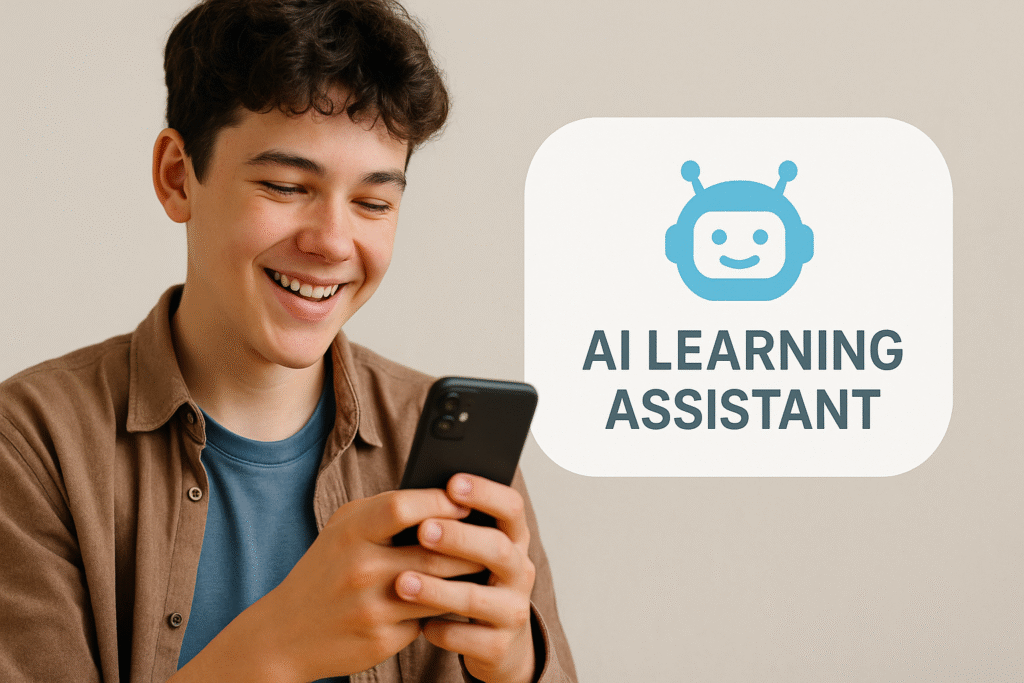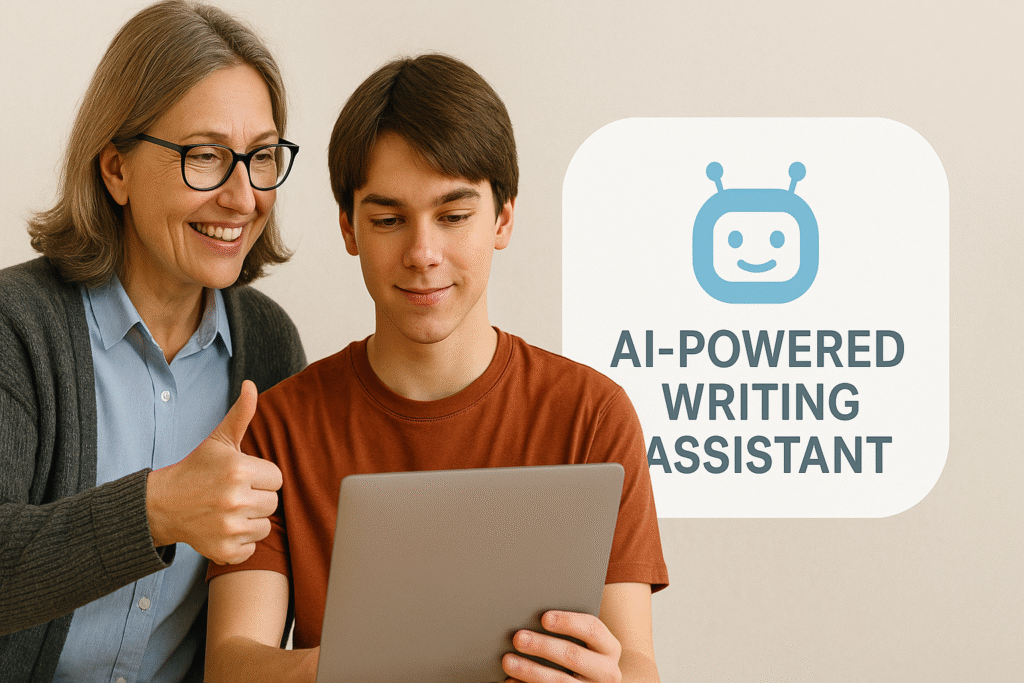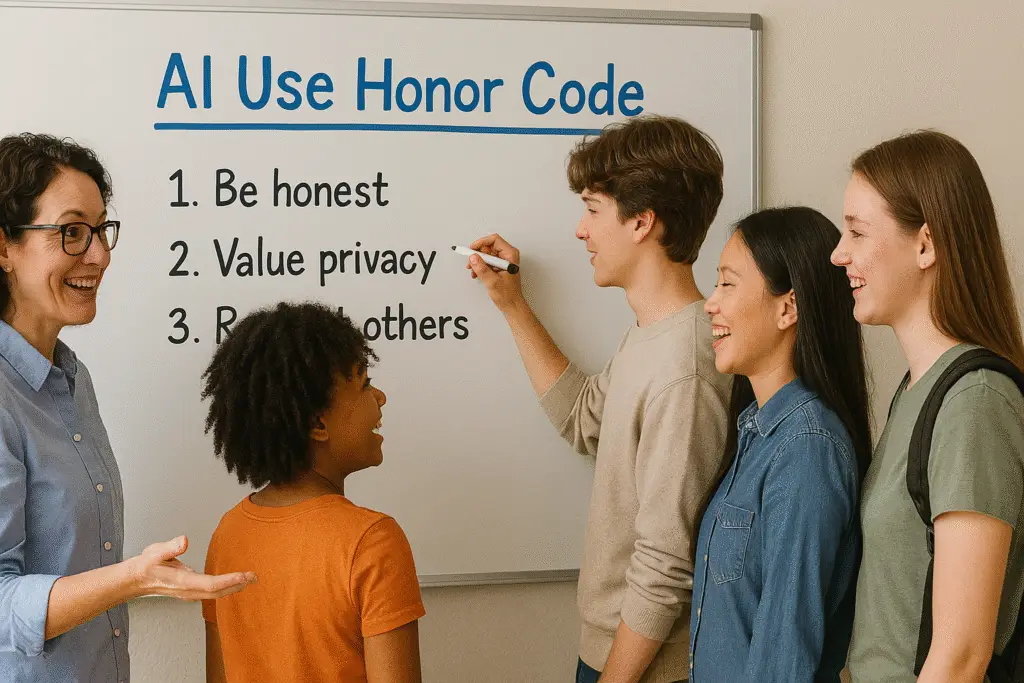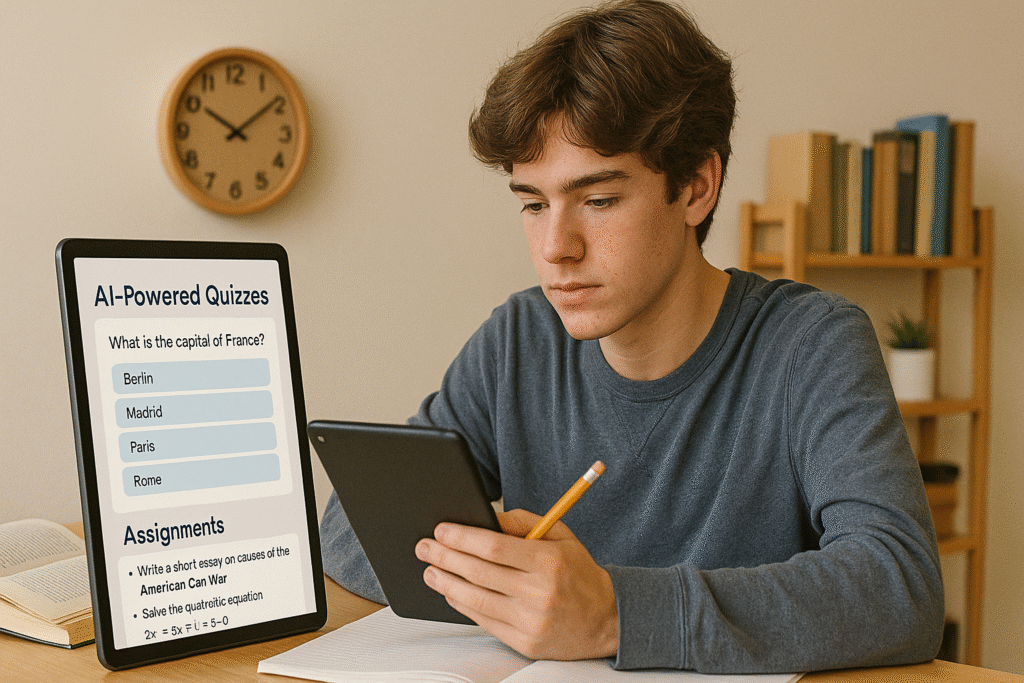
Artificial Intelligence is no longer just a buzzword — it’s becoming a helpful study buddy in classrooms and college dorms around the world. From writing assistance to instant quiz generation, AI tools for students are changing how learners work, revise, and think.
But there’s a challenge: introducing these tools without confusion, fear, or resistance.
Whether you’re a teacher, parent, or student leader, this guide will show you how to introduce free AI tools for students in a way that feels natural, safe, and even exciting.
Let’s dive into 7 genius ways to bring AI into students’ lives — and make sure they love it from the start.
🎯 Start With What Students Want — Not What You Want
Before introducing any AI tool, stop and ask:
“What’s in it for them?”

Students are more likely to adopt AI when it helps them solve their own problems, not just yours as an educator. Instead of presenting a tool because it’s trendy or efficient, connect it directly to their daily academic struggles:
- Stressed about homework? Show how AI can help break down assignments into smaller, manageable steps.
- Hate repetitive research? Demonstrate how tools like Google Gemini or ChatGPT can summarize articles or find sources faster.
- Struggling with writing? Tools like Grammarly or Smodin can help polish essays and catch errors they miss.
🧠 Pro Tip: Let them try the tool on their own question, not your example. When students see a tool solve their problem in seconds, they’re hooked.
🎁 Free AI Tool Recommendation:
Smodin – A writing and homework assistant tailored for students. It generates summaries, answers, and rewrites content with sources included.
🤝 Make It Feel Like a Friend, Not a Threat
If students feel like AI is going to “take over” their learning or replace their thinking, they’ll resist it. Instead, introduce AI as a helper, not a hacker of human potential.

Show them how AI tools support their efforts, not do the work for them:
- Frame ChatGPT as a study buddy, not a solution machine.
Say: “It helps you get unstuck, not cheat.” - Introduce AI exam generators as a practice tool, like a personal quiz coach—“You’re still the one doing the learning.”
- Present AI writing tools like Grammarly as enhancers:
“It makes your ideas clearer, but the thoughts are still yours.”
👩🏫 Teachers can also emphasize this in tone:
Instead of saying: “This will save me time,”
Say: “This will help you learn smarter and faster.”
📱 Student AI App to Try:
Brainly AI – It offers hints and guided solutions without just giving the answers, keeping students in control of their learning.
🌟 Give Honest Praise for Smart Usage

Students thrive on encouragement—especially when trying something new. Instead of scolding misuse of AI tools, spotlight when they use them wisely.
🎯 Examples of positive reinforcement:
- “I love how you used the AI exam generator to create practice questions for yourself. That’s how top performers train!”
- “Great job refining your essay with an AI tool—it’s still your voice, just clearer.”
- “You explored a tough topic using AI. That’s what smart learners do—seek support, not shortcuts.”
By praising good behavior, you reinforce self-guided responsibility. Students begin to associate AI with growth, not guilt.
🎯 Start With Free & Familiar AI Tools for Students
Introducing AI tools for students doesn’t have to be intimidating—especially when you begin with tools that are both free and familiar.
Start where students already feel safe and curious.
🧠 Why Free AI Tools Work Best First:
- They lower the barrier to entry—no sign-up friction or subscriptions.
- They allow students to explore and fail forward—without fear.
- They’re often backed by big names, giving them instant credibility.

✅ Great Free AI Tools for Students:
Check out our Top 10 Free AI Tools for Teachers in 2025—many work equally well for students too.
- MagicSchool.ai – Safe, student-friendly AI for writing, organizing thoughts, and summarizing lessons.
- Smodin – An AI writing assistant great for assignments.
- Quizizz AI – Turn notes into quizzes in seconds.
- SchoolAI – Tools for writing feedback, generating ideas, and studying smarter.
- Canva AI – For student presentations, visuals, and projects.
👩🏫 Tip for Teachers & Parents:
Start by showing how you use these tools—model safe behavior. Students imitate more than they obey.
🎓 Link AI to Student Goals, Not Just Grades

One of the most powerful ways to introduce AI tools for students is to connect them to what students actually care about.
Instead of saying,
❌ “Use this tool because it helps with schoolwork,”
try saying,
✅ “This AI can help you finish your homework faster so you can get back to gaming, art, or YouTube.”
🚀 How to Make AI Relevant to Students:
- Show how AI can save time on assignments and research.
- Emphasize how AI tools can help them write better essays, prep for exams faster, or organize ideas.
- Let them experiment with tools like:
- AI Exam Generators – turn notes into practice tests.
- AI Assignment Assistants – brainstorm and structure ideas easily.
- Student AI Websites – platforms designed for learners (like Notion AI or Grammarly).
🎯 Frame AI as a means to their personal goals—not just academic ones. Want to be a YouTuber? Show how AI scripts videos. Into fashion? Use AI to brainstorm trends or designs. AI isn’t just for A+ students—it’s for curious minds.
📲 Student-friendly apps like Notion AI, ChatGPT (with custom GPTs), and StudentAI.app offer mobile-friendly, easy-to-use interfaces for learning on-the-go.
🎨 Encourage Play, Curiosity & Creativity with AI
If you want students to adopt AI tools willingly, don’t start with rules—start with play.

Before pushing AI for assignments or study schedules, let students tinker. Invite them to explore AI tools the same way they explore a new app or game.
💡 How to Spark Curiosity:
- Let them ask ChatGPT funny questions or create fantasy stories.
- Use text-to-image AI like DALL·E or Canva’s Magic Media to turn wild ideas into visuals.
- Create a “Free AI Exploration Day” where students test different tools just for fun.
🧠 This approach builds familiarity without pressure. Once students realize AI can be creative and even fun, they’ll be more open to using it for learning.
🎁 Bonus: Try These Free AI Tools for Students
| Tool | Use Case |
|---|---|
| Craiyon / DALL·E | Turn text prompts into creative art |
| Scribbr AI | Paraphrasing & citation generation |
| Canva Magic Tools | Design, video editing, presentations |
By allowing play, you build trust. And once students trust a tool, they’re far more likely to use it with purpose.
🛡️ Provide Guardrails, Not Chains

You don’t win student buy-in with control—you win it with respect and trust.
When introducing AI tools for students, it’s tempting to create rigid rules. But instead of handing them a list of don’ts, guide them with why’s.
🔍 Smart Guardrails in Action:
- Discuss digital integrity: Ask students how they’d feel if someone else used AI to do their work.
- Involve students in creating an “AI Honor Code” for the class.
- Share real examples of AI misuse and invite feedback:
“What would you do differently?”
You’re not blocking students—you’re giving them a compass.
🛠️ Tools That Promote Safe Use:
| Tool | Purpose |
|---|---|
| Originality.ai | Detects AI-written content to avoid plagiarism |
| AI Ethics PDF Guide | A printable student-friendly resource |
| Student AI Exam Generator | Lets teachers create fair, AI-assisted quizzes—without shortcuts |
When students feel they’re part of shaping the rules, they’re far more likely to respect them. Because now, it’s their idea, too.
🌍 Showcase the Real-World Value of AI Tools for Students

One of the quickest ways to win over students is to show how AI helps them win in life.
Forget lecturing about algorithms or ethics. Instead, speak their language:
“This tool can save you time, reduce stress, and even improve your grades.”
🎓 Real-Life Use Cases Students Love:
- Free AI tools for students PDF: Give them a downloadable list of tools that help with assignments, scheduling, research, and presentations.
- AI for students assignment help: Use platforms like ChatGPT or Smodin to show how AI can guide them—not write for them.
- Student AI apps like Notion AI, Quizlet AI, or GrammarlyGO: Help them study smarter, not harder.
- AI exam generators: Create practice quizzes with tools like TeachMate AI so students can self-test before real exams.
- Best AI tools for college students: Introduce advanced platforms like Scite.ai, Consensus, or Jasper for deeper research and writing support.
Curious about how AI is transforming schoolwork? Read Benefits of AI in Education for deeper insights.
🧭 Tip:
Ask students:
“Which part of school stresses you the most?”
Then show how an AI tool can make that easier. Let the solution come from their need—not just your suggestion.
🤝 Keep AI Use Transparent and Inclusive
If students sense hidden agendas, they’ll resist. But when you’re open about how and why AI tools are being used, they’re far more likely to engage.
🧠 Be Honest About AI’s Role
Tell your students:
- “This AI tool is here to help you brainstorm, not to replace your thinking.”
- “We’ll learn how to use it responsibly—just like any new tech.”
By involving them in setting ground rules, you’re building trust and teaching digital responsibility at the same time.
🌍 Make Inclusion a Priority
Not every student has equal access to AI tools. Be proactive:
- Recommend free AI tools for students
- Provide access to student AI websites on school devices
- Share offline-friendly options or downloadable PDFs
When you champion equity and clarity, students feel seen and supported—not singled out.
🌱 Encourage Exploration Without Pressure
One of the surest ways to spark resistance is to force change. But when students feel free to explore at their own pace, curiosity takes over—and learning happens naturally.
🚀 Let Students “Play” with AI Tools
Instead of starting with a test or assignment, begin with a low-stakes activity:
- Have them generate a fun quiz using an AI exam generator
- Let them ask a Student AI app to help brainstorm project ideas
- Use tools like MagicSchool.ai or Notion AI to co-create a story
When students see the tool as helpful (not controlling), they engage voluntarily—and that’s when real learning sticks.
🧩 Create a “Discovery” Space
Build a digital sandbox where students can try different AI tools for students (free) with no grading attached. Encourage them to compare tools:
- Which helped them study best?
- Which felt natural to use?
You’ll not only teach them tech skills—you’ll model autonomy and critical thinking.
🎁 The Safe AI Starter Pack – Free AI Tools for Students
Before sending students off to explore AI alone, equip them with safe, trustworthy tools. Curated resources build trust—and reduce overwhelm.
🔍 Best Free AI Tools for Students (2025 Edition)
Here’s a teacher-tested list of free tools that are easy, ethical, and effective:
| Tool | What It Does | Why It’s Great for Students |
|---|---|---|
| 🧠 ChatGPT | Helps with brainstorming, writing, explanations | Natural language tool that supports learning across subjects |
| 📝 Notion AI | Organizes notes, summarizes content | Ideal for research-heavy subjects |
| 📚 Quizizz AI | Creates fun quizzes and flashcards | Gamified, collaborative learning |
| 🧪 MagicSchool.ai | AI tools made for teachers and students | Built with classroom use in mind |
| 🎓 Smodin | Assignment help, rewriting, citation tools | Especially helpful for ESL students |
| 📄 Jenni AI | Essay starter and outline generator | Encourages structure and flow in academic writing |
| 📊 Twee | AI for teachers to generate worksheets, story prompts | Great for both assignment and class activities |
🧠 Final Thought: Empower, Don’t Replace
AI isn’t here to replace students’ thinking—it’s here to enhance it. By introducing AI gradually, playfully, and ethically, you’re showing them how to think with AI tools for students—safely and responsibly —you’re teaching confidence, curiosity, and responsibility.
Want to see where this is all heading? Explore the Future of Education: How Technology is Shaping Classrooms in 2030.
🎓 Ready to give your students a head start with AI?
🔁 Want more AI tips for students and teachers? Visit our homepage or explore more on MatlabiAI’s blog for in-depth guides.